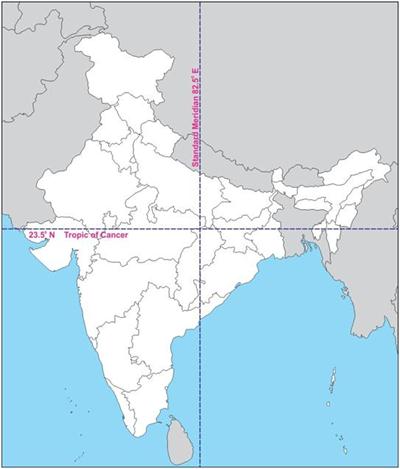PDF chapter test TRY NOW
- For a particular longitude, all the places located on the line will have the same time, i.e. when the Sun is overhead, it is 12 noon for all the places in the longitude line. This is called the local time.
- Only once in a day, the Sun will be overhead on a line of longitude.
- So, the local time differs for every line of longitude.

- It is the local time of the place when the Sun reaches overhead the Greenwich Meridian at 12\ noon.
- With the standard line of longitude, the world time is calculated.
- This time is called as Greenwich Mean Time.
To determine Local time:
For example, if the time is 12 noon at Greenwich Meridian, it is 12:04P.M. at 1°E line of longitude and 11:56A.M. at 1°W line of longitude.
So, as one moves towards the east from any meridian the time increases.
And, if one moves towards the west from any meridian, the time decreases.
1. The word meridian is from the Latin word ‘Meridianus’. The word 'Meridianus' means mid day (Medius – Middle, dies – day). Therefore, meridian means the position of the Sun found overhead at a place at noon.
2. A.M. means 'Anti Meridiem' (Anti –before) – Before Noon.
3. P.M. means 'Post Meridiem' (Post – after/later) – After noon.
